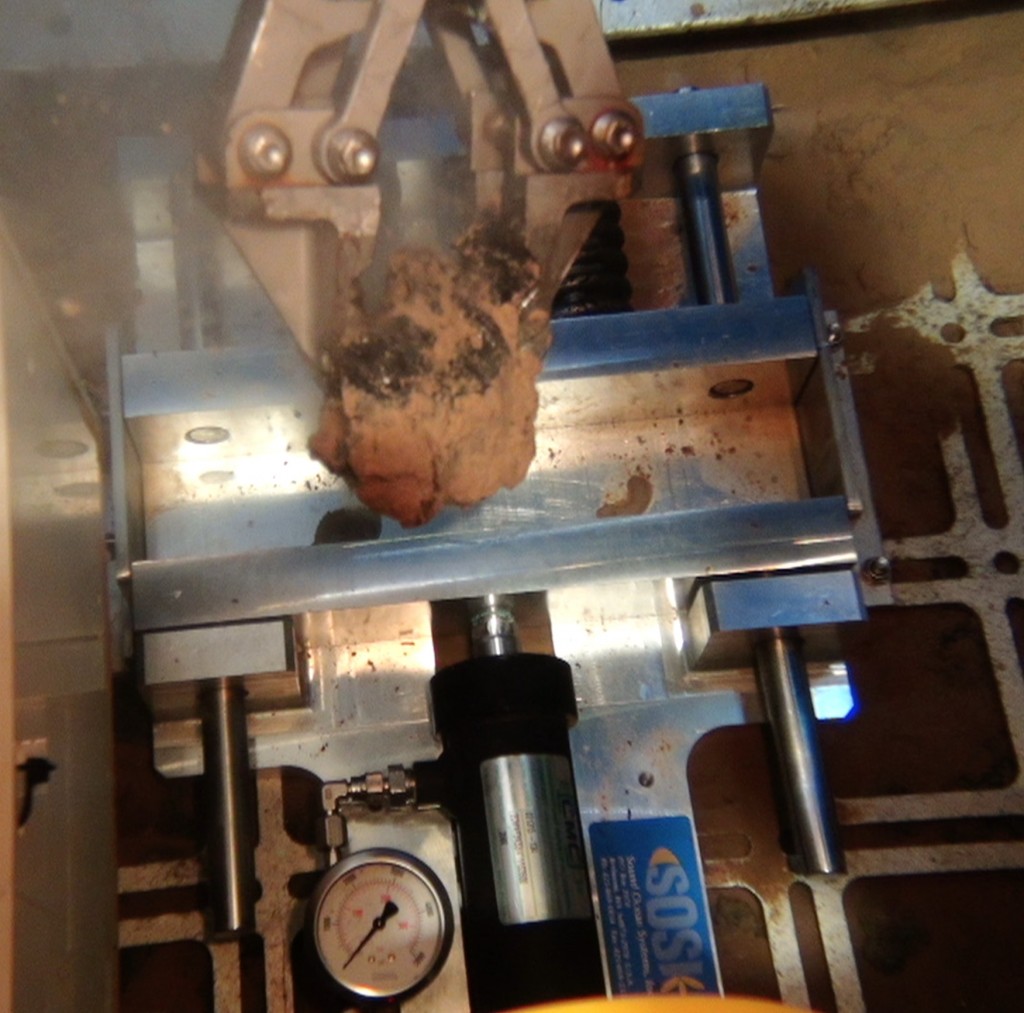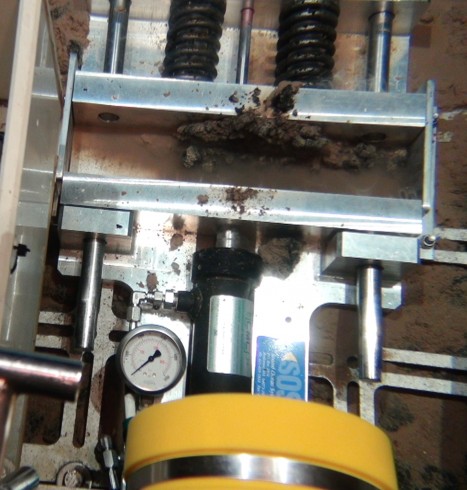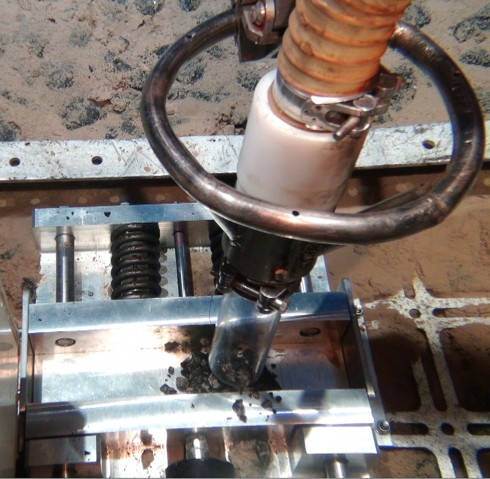Mining Mn-nodules is certainly a debatable topic. Whether it will happen depends on metal market prices, governmental and industry interests, environmental & societal acceptance but also on technological feasibility. In this respect, one of the various unknows are the mechanical properties of Mn-nodules, which are of great importance because they determine how the nodules can be transported to the sea surface: Do they break into smaller parts when lifted or do they stay intact as the solid decimeter-wide ‘canon balls’ they are?
The development of a sediment plume during the mining process at the seafloor is one of the major questions in most of our environmental impact studies. If Mn-nodules are crumbled when transported, will that have additional implications on the dewatering system and consequently for the environment? Thus it is not only the industry that is interested in the mechanical properties of the nodules, but also scientists trying to assess what will happen to the environment if you mine the sea floor. This is also what the scientific crew on board RV SONNE is researching.
During the kick-off meeting of the JPIO project in January, we discussed how a potential mining operation might look like with representatives of GSR (Global Sea Mineral Resources), one of the licenses in the CCZ and a subsidiary of the Belgian dredging company DEME. The confidential discussion provided important insights into the industry way of thinking and the approach they currently follow to ‘harvest’ the nodules from the seafloor.
During these discussions it became clear that so far nobody has carried out reliable and detailed studies on the mechanical behaviour of nodules mined under in-situ pressure (at 450 bar in 4500 m water depth) and if the nodules stay intact or crumble to pieces.
Once the opportunity was identified, this question led to building THE CRUSHER: This device for ‘crumbling’ the manganese nodules was developed in a cooperation of the GEOMAR ROV team GEOMAR and DEME/GSR technicians, who had it built in America. From there it was shipped to Panama just in time to arrive on board before we left harbour. A ROV dive this week was used to test the crusher for the first time in 4300m water depth in the IOM area we are currently working in (InterOceanMetals, one of the licenses in the CCZ). The crusher worked well and ‘mushed’ the nodules; they were squeezed together and crumbled easily.
To which extent this will have consequences for mining operations, I do not know; it might mean nothing or it might mean a lot. If Mn-nodules cannot be separated from the sediment thoroughly already at the seafloor, the pump design of transporting the nodules to the sea surface needs to be different and the higher amount of fine particles has consequences on the design of the dewatering system on the ship. Sediment transported upwards would need to be disposed again. To which extend this might have consequences on the feasibility of deep-sea mining in general, is not for us to decide and figure out. Being in contact with the industry, knowing how they intend to mine and advise them on the environmental consequences is one topic we have in the JPIO project.
The cooperation between science and industry in this respect is of great importance and we discuss those topics thoroughly and provide feedback. My personal feeling is that the industry we are talking to, does care about the environment, but probably has a different assessment of what can be sacrificed and to which extend.
At the end it is up to us to provide clear answers if and when the deep-sea environment around nodule areas with its current function collapses beyond repair. For this we need to better understand how it is functioning in first place, how certain species distribute, what will happen if one of these species is gone, and from where a mined area could be re-colonize (e.g. sea mounts in the area, un-mined Mn-areas). All this is what we try to get answers for during this cruise.
Jens Greinert


